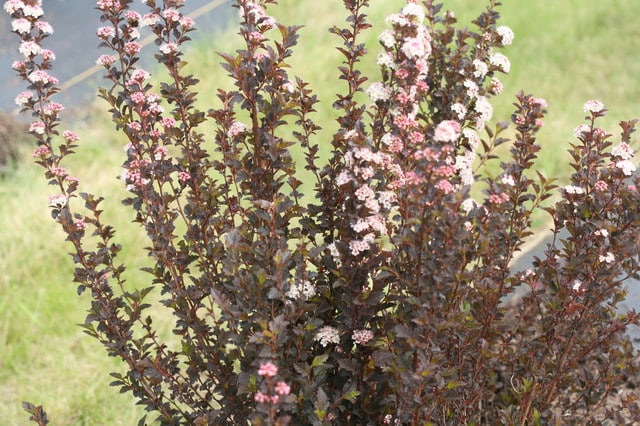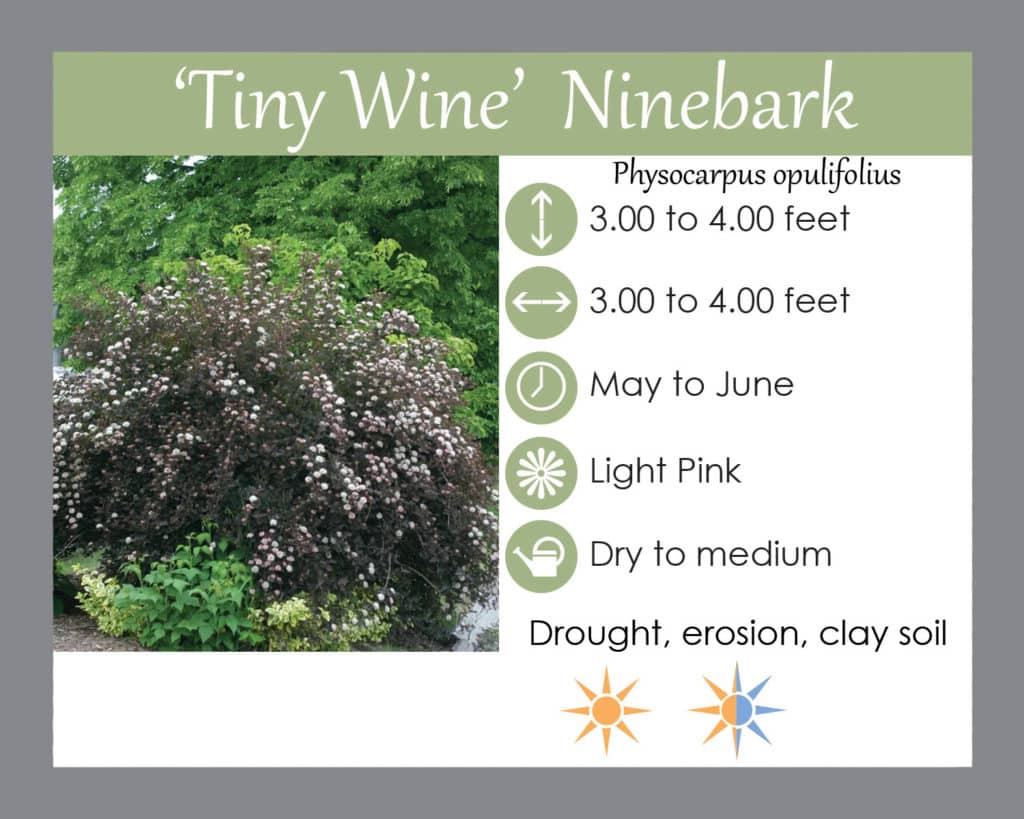‘Tiny Wine’ Ninebark: Maryland Native Plant That Thrives
LGS Notes: ‘Tiny Wine’ ninebark, a small shrub with deep purple, year round color and soft pink flowers in the spring. It tolerates drought, erosion, and clay. I use it in designs to add a different foliage color and texture. This variety is shorter than the straight species. Ninebark is beneficial to the birds (they eat the berries) and to to native bees and honey bees, particularly mining bees. This shrub is great for winter interest because of the peeling bark and dried flowers that persist into winter. The foliage color in fall is a nice bright yellow color.
Ninebark is often used in erosion areas and is pretty tough. It is recommended to grow no fewer than 3 nine barks together in order for best fruit set. I like to combine this plant with red, white and purple blooming perennials that are short to medium in height to highlight the coloring of ninebark. This can also be planted as a native substitute for the invasive Japanese spirea.
Click Here to Get a Quote for ‘Tiny Wine’ Ninebark from Our Online Shop
Information from Missouri Botanical


